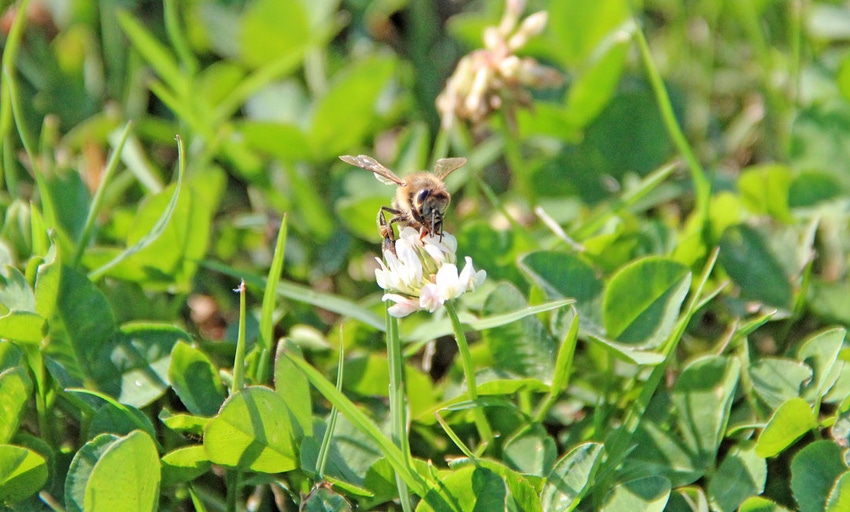March 11, 2013

Beekeeper complaints about the failure of their bees to emerge from the pupal stage, beginning 17 days after applications of the fungicide Pristineto almonds, prompted a three-year investigation into the cause. Research showed that the fungicide, itself, harmed neither adult nor immature bees. The organosilicone adjuvant did not appear to be the problem, either, although a number of adjuvants can harm honey bees.
The unexpected discovery was that an insect growth regulator (IGR), diflubenzuron, had been added to the tank mix and applied with the fungicide at full bloom, apparently to assist in controlling peach twig borer. This type of growth regulator inhibits the production of chitin, the basic structural compound of an insect exoskeleton. Thus, the pupae could not develop into functional adults.
Insect growth regulators have been used on field and row crops, later in the season, with little harm to colonies. However, later in the season, other pollens are likely being consumed, in addition to the IGR-contaminated pollen. In the case of almonds, honey bees gather little else other than almond pollen, so they will be eating significant doses of whatever might be contaminating the pollen. In this particular situation, it appears that too much IGR made its way into the larval diet and caused brood loss. Usually, the addition of Bacillus thuringiensis (Bt) to the tank mix would be a much more reasonable twig borer treatment from the standpoint of bee safety.
(See related: Pesticides on brink of ban over honey bee losses)
Despite the fact that no bee-toxicity warning may appear on the product label, or that the label might even state “safe for bees,” the testing behind those statements usually relates to studies conducted on acute toxicity to adult worker bees. Obviously, adult bees are no longer producing chitin, so exposure to IGRs should not damage them. It is the immature stages that require protection, and current regulatory protocol does not mandate testing for negative effects of active ingredients, formulated products, adjuvants, or other “inert ingredients” on immature honey bees.
Probably no pesticide is totally benign to a honey bee colony. Pesticides are designed to kill (“-cides”). The best way to protect honey bees from poisoning is to reduce or eliminate the amount of pesticides that are returned to the hive in forager bees’ pollen pellets. Many early-season tree crops shed their pollen in the morning and the bees are likely to collect nearly all of it by early in the afternoon.
By checking for pollen loads on foraging bees on the bloom, an applicator can determine when the pollen foragers have basically finished foraging for the day. At that time, pesticides that are not acutely toxic to honey bees can be applied to the crop. Nectar foragers that still may be visiting the contaminated bloom do little to contaminate the pollen stores. By avoiding contaminating pollen and pollen foragers, applicators can go a long way toward protecting the health of honey bee colonies.
(See related: Honey bee losses defy solitary explanations)
You May Also Like




